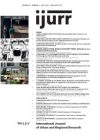Over the last two decades, social and economic changes in transitional economies have produced many new outcomes. In this article, I examine some of the ways in which China’s transition has produced gendered outcomes and highlight evidence of these outcomes. I argue that during transition the state has shifted its goals to economic ones, but unlike capitalist economies it still has at its disposal instruments of social control. Peasants are made more vulnerable and must rely on migrant work for survival, but their low institutional status relegates them to outsider status in urban areas. These circumstances, together with socio‐cultural traditions that constrain women’s mobility and endorse stratifications, have enabled the development of a labor regime that fosters segmentation and division of labor. Peasant migrants’ reliance on social network further reinforces segregation in the urban labor market. Using multiple sources of macro‐level and field surveys, I examine both quantitative and qualitative evidence of gender segregation and division of labor. The findings show that a high degree of gender segregation among rural‐urban migrants exists in the urban labor market, that peasant women’s urban work opportunities are short‐lived, and that upon marriage women migrants are relegated back to the village and to the ‘inside’, in part to sustain gender division of labor as a household strategy.
Details
Written by:
C. Cindy Fan
Digital Object Identifier (DOI)
10.1111/1468-2427.00429
About DOI
Read full article as PDF
Read full article as HTML
See the references for this article
